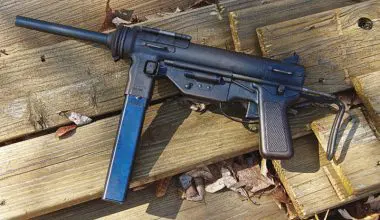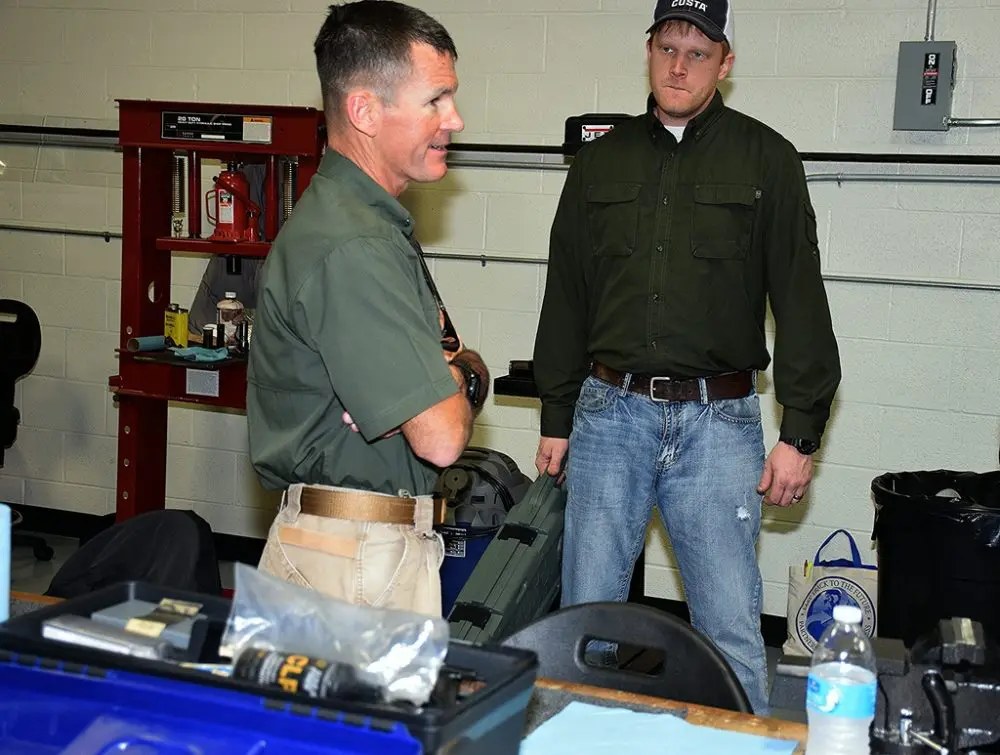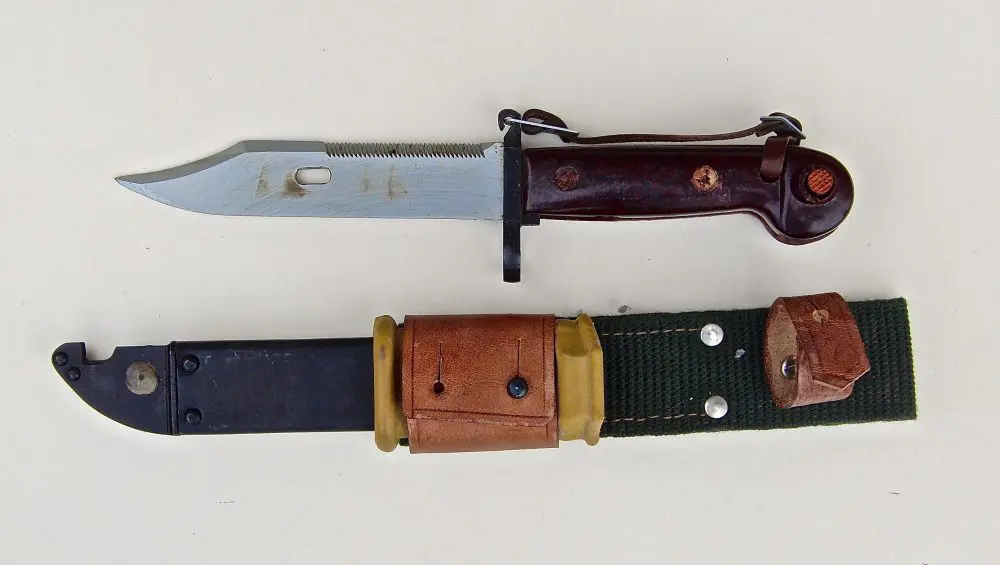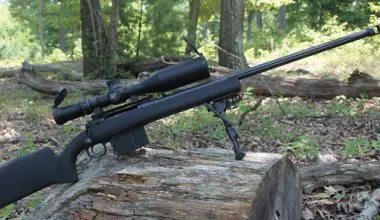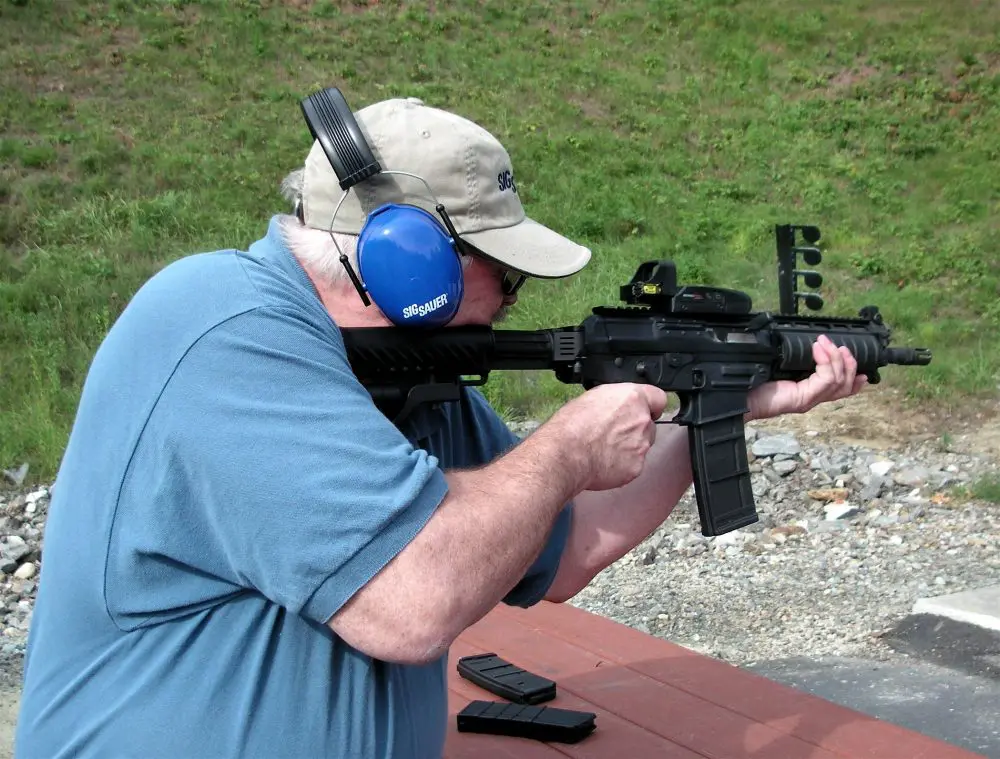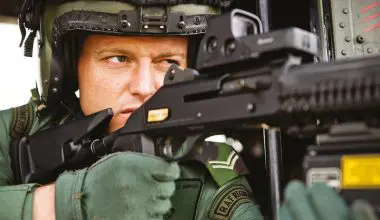I just finished writing a book on the HK MP5, which caused me to reminisce about the variations I’ve used over the years.
When I was writing the section on the MP5K and its use by close-protection teams, I realized that though I have fired the “K” quite a bit over the years, I never really carried it when working on a security detail. I have trained with teams that had them and shot them, but never when standing post, walking perimeter, or doing escort.
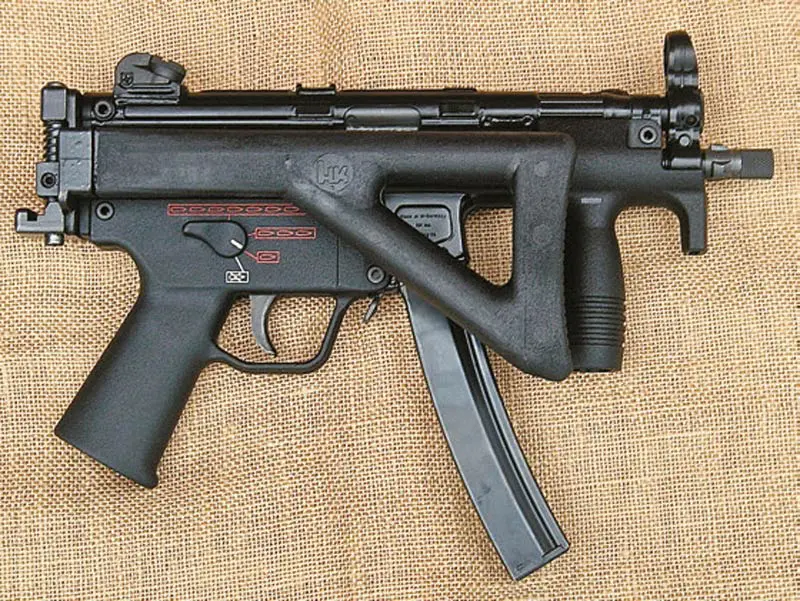
In fact, the SMGs I’ve used on security teams were a fairly eclectic lot. I used the Beretta M12 on a couple of jobs in North Africa and have used the AKSU-74. I once used a Sterling protecting a residence and another time had access to an MP5A3. One team I was on had Uzis. On another team I had access to a French MAT-49—“access” means I would have taken it away from the local security man armed with it if I really deemed it necessary!
Back to the MP5K.
Reportedly, the MP5K was developed at the request of one of HK’s Latin American reps. This makes a lot of sense to me as I’ve worked with VIP drivers in South America who use some flavor of machine pistol.
As originally developed with just an end cap on the receiver, the MP5K was only 12.8 inches overall. There was a sling swivel on the end cap and it was advisable to use a sling and push the weapon forward against it for more stability. Some fairly sophisticated units did not use the sling, though, but became skilled using just the vertical foregrip and pistol grip.
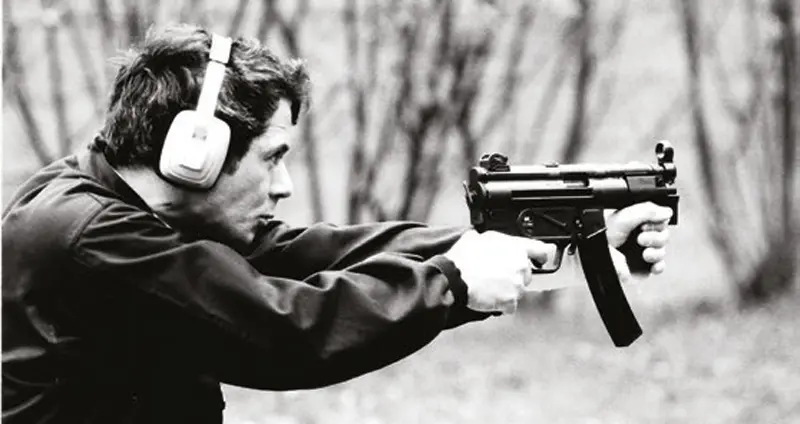
On early models, care had to be taken not to let the hand slip forward in front of the muzzle. One of the only SAS casualties at Prince’s Gate was to a trooper who was using an early MP5K and shot a groove in his fingers. Later versions of the K have a pronounced lip to keep the hand from going too far forward.
Another British user of the MP5K was SO14, the Royalty Protection Branch of the Metropolitan Police. Designations have changed for some of the armed units and SO14 is now part of Protection Command, which includes SO6, the Diplomatic Protection Group, which I seem to remember has also used the MP5K.
One of my contacts in the Met told me that MP5Ks were first acquired for a U.S. Presidential visit, I believe by Ronald Reagan. The Secret Service wanted the Brits to “up gun” since they weren’t allowed to bring their Uzis. I don’t know if that is correct, but it made sense when I heard it.
My favorite story from the Royalty Protection guys relates to Princess Diana, whom they all adored. According to my contacts, she was visiting Royalty Protection when they were training and she shot the MP5K. Allegedly, she enjoyed it so much that whenever she visited, they would make sure they had extra loaded mags ready for her! Of course the MP5SFA2 and SFA3 semi-auto versions are now widely used among British armed police.
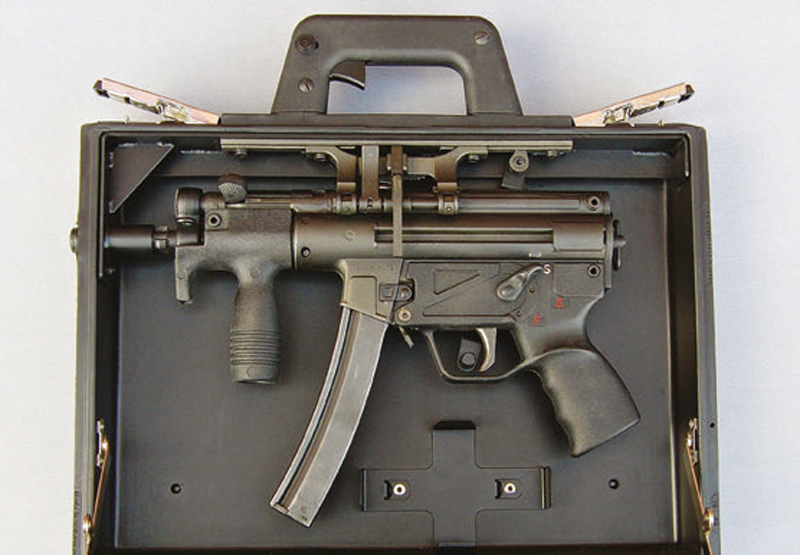
Heckler & Koch developed various clandestine ways to carry the MP5K for undercover or close-protection missions. A special briefcase is the most interesting to me. It is designed so that the K will fit into the briefcase with a full 30-round magazine in place. The muzzle fits through a port in the side of the case, and a lever inside the handle mechanically operates a device that will operate the trigger. I trained with a team that had a couple of MP5Ks in the briefcases, and I’ll offer some comments.
I was always very careful around the guys with the briefcase, because the selector was set on full auto and the muzzle pointed where the briefcase pointed. Users had to really concentrate on muzzle awareness and keeping their hand off the trigger portion of the handle.
Different teams used different firing techniques. The one with which I trained turned the briefcase on its side and braced it against the thigh. I fired a couple of mags through it in this manner and had no malfunctions, but I think I would have braced it in the upright position to lessen the chance of brass bouncing into the action. I haven’t shot the device enough to really develop an opinion of its tactical use, but it’s a pretty close-range weapon.
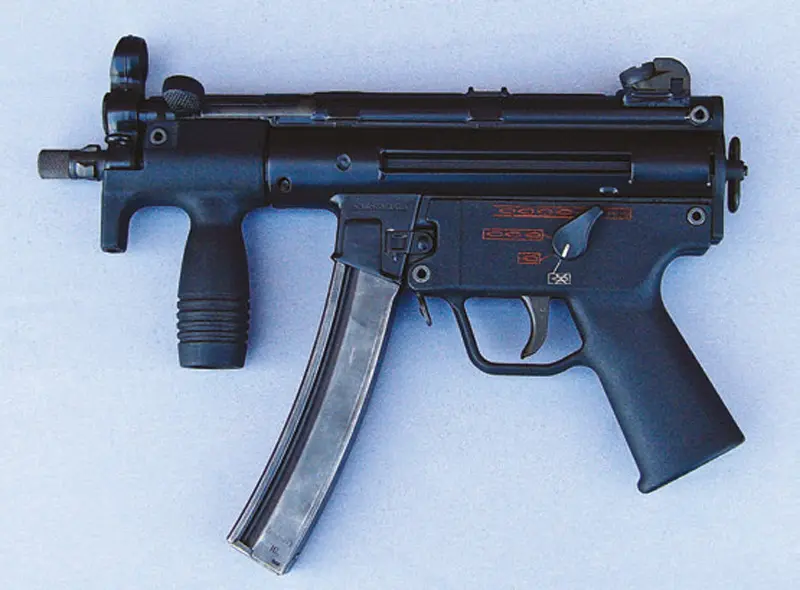
If I were using an MP5K on a security team, I would prefer the folding-stock PDW version, which only adds a couple of inches in overall length with the stock folded. And I’d prefer having a threeshot burst trigger group, though full rock ‘n’ roll might be useful for breaking an ambush at close range.
Although I think the MP5K is a very classy compact SMG, many security teams that formerly used it have switched to the FN P90, which gives them a compact weapon with greater magazine capacity and good penetration.
A lot of protective teams use an MP5A3 or MP5A5 with telescoping stock, which is still quite compact and capable of being worn under a topcoat. To be honest, the best compact weapon I ever used on security details was the HK53, which gave me a harder hitting, farther reaching weapon that was still only 22.2 inches overall with stock collapsed.
Select-fire weapons are generally used to break an ambush or for shortrange counter-sniper work. The MP5K certainly would not have functioned even fractionally as well as the HK53 for the latter.
